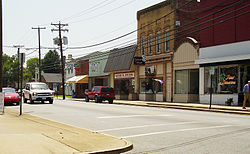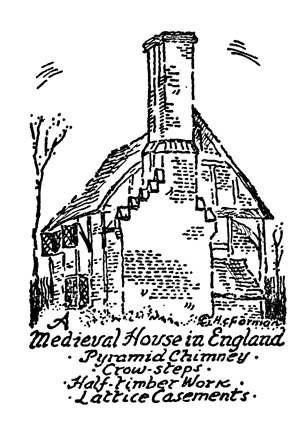Greensville County Genealogy, Wills, Estates, Indexes to Probate Records
Greensville County was formed from Brunswick in 1781. Parishes: Meherrin and St. Andrews. The county seat is Emporia, Virginia. Pictured here is the court house which was built in 1781.
Early settlers were: Joel Mabry, Joshua Clark, Mary Harrison, Nathaniel Harrison, Nathaniel Malone, Richard Blanks, James Mason, James Harris, Henry Clark, Daniel Nolley, Charles Lucas, Henry Chambliss, Aaron Parks, Richard Peete, Seymour Powell, Thomas Morris, Thomas Jordan, Thomas Lewellin, Thomas Person, William Burt, William Fanning, and William Peebles.
Indexes to Wills, Estates, Inventories
- Index to Inventories, Accounts, Wills, 1781 to 1806
- Index to Inventories, Accounts, Wills 1806 to 1816

Digital Images of Greensville County Wills 1781 to 1806
Testators: Allen, James;Atkinson, Aaron; Atkison, Thomas;Avent, William;Bailey, Henry;Barnes, William; Bass, Burwell;Bass, Samuel;Batte, William;Blanks, Richard; Brewer, Winefred;Burt, William;Butts, John;Cain, George; Cato, Daniel;Cato, John;Cato, John (2);Chambliss, Allen; Chambliss, Henry;Clark, Elizabeth;Clark, Henry;Clark, Joshua; Clark, Joshua (2);Clark, Peter;Cook, Henry;oker, James; Collier, Mary;Davis, Braston;Dawson, John;Day, John;Dean, Mary;Deloatch, William;Denton, Susanna;Dupree, John;Dupree, Lewis Jr.;Edwards, Priscilla;Fanning, William;Fisher, Daniel;Fisher, Daniel (2);Fox, John;Fox, John (2);Fox, William;Goodrich, Benjamin;Goodrich, Edward;Goodrich, William Jr.;Grigg, Abner; Grigg, Lewis;Griggs, Frederick;Grinstead, Hannah;Gunstead, John;Harris, James;Harrison, Mary;Harrison, Nathaniel;Haley, James;Hayley, Henry;Harris, Nathan;Heathcocke, Mary;Hicks, Robert;Jeffries, Achilles;Johnson, Elizabeth;Johnson, Moses; Johnson, Moses (2);Jones, Leah;Jordan, Thomas;Lanier, Jacob; Lanier, Mary;Lewellin, Thomas;Lightfoot, John;Little, William;Loftin, John;Lucas, Charles;Lucas, John;Lucas, Tabitha; Lundy, Mary;Mabry, Elizabeth Jones;Mabry, Joel;Mabry, Nathaniel;Maclin, Elizabeth;Mabry, Winnefred;Maclin, James; Maclin, William;Major, Harwood;Malone, Nathaniel;Mason, James;Mason, John;Massey, Richard Sr.;Massy, John;Mayes, Matthew; Metcalf, Andrew;Morris, Thomas;Morris, Thomas(2);Moss, John; Nolley, Daniel;Parks, Aaron;Parks, Joseph;Peebles, William; Peete, Richard;Person, Thomas;Peterson, Batt;Pettway, Edmund; Pettway, Elizabeth;Pettway, John Parker;Phillips, John; Powell, Edward;Powell, Jane;Powell, Robert;Powell, Seymour; Powell, Thomas;Pritchett, Elizabeth;Putney, David;Randle, Thomas Graves;Rawlings, Elizabeth;Rawlings, Thomas;Reeves, Sarah; Rieves, Benjamin Sr.;Rivers, Robert Sr.;Robinson, James; Robinson, William;Rosser, Elizabeth;Rowell, Eleanor;Sills, David;Sims, Robert Wall;Sims, William;Smith, David;Smith, Ead; Smith, Elizabeth;Smith, Frederick;Smith, Thomas;Smith, William;Spence, John;Stewart, John;Stewart, Thomas;Stewart, William;Sykes, Benjamin;Thweatt, David;Tomlinson, John; Tomlinson, William;Turner, John;Turner, William;Tyus, Lewis Sr.;Vaughan, Faitha;Vaughan, Pierce;Vaughan, William;Vick, John; Vick, Sarah;Vincent, John;Wager, Elizabeth;Wall, James; Wall, James M.;Wall, Sarah;Watson, Alexander;Watson, Gershon; Whittington, Hannah;Whittington, John;Wilkins, Douglas; Wilkinson, Elizabeth;Williams, Benjamin;Williams, Martha; Williamson, John;Williamson, Martha;Williamson, Robert; Williamson, Winifred;Woodroff, Joel;Woodroff, John; Woodroff, Richard;Wrenn, Francis;Wrenn, James;Wyche, Henry; Wyche, Mary;Wynne, Mary;Young, James
Greensville County People
Researching ancestors in Greensville County, Virginia also includes their connections in the adjoining counties of Brunswick, Southampton, and Northampton, with a view to the fact that people in Emporia also did business over the North Carolina 3order. Some of these families, such as Chambliss and Bolling, moved to South Carolina after the Revolutionary War in search of new land. List of Traced Virginia Families on this website
How English Medieval Homes Influenced Virginians
During the 1600s Great Britain was a country of fortified manors, battlemented castles, thatched and wattled farmhouses, picturesque chimney stacks, half-timber work, winding tower staircases, tracery-windowed abbeys, minsters, and little parish churches. For more than a thousand years, medieval architecture flourished almost everywhere. One can imagine Chaucer in the spirit of its buildings. The reason is the Anglo-Saxon, Norman, and Gothic influences. The English Gothic Style is itself subdivided into various styles called Early English, Decorated, Perpendicular,, and Tudor. The Tudor style was also referred to as Late Gothic or Late Medieval and was mostly during the Court of King Henry VIII (1509-1547). Incidentally, Henry VIII was an enthusiastic builder of domestic architecture, unlike anything which earlier generations had known. Even when Elizabeth I ascended to the throne, buildings continued to be constructed in the Tudor or Late Medieval flavor. Also, during her reign, an architecture called Early Renaissance entered the landscape. Williamsburg, Virginia elevated its homes into a style called the High Renaissance, possibly because of the delays caused during long periods of delay in crossing the ocean. However, we must remember that Virginians paid high prices for imported goods, especially nails and window panes. In fact, they dissembled homes and barns and reused the plank boards, nails, and other materials elsewhere. Source: Virginia Architecture in the Seventeenth Century by Henry Chandlee Forman.

